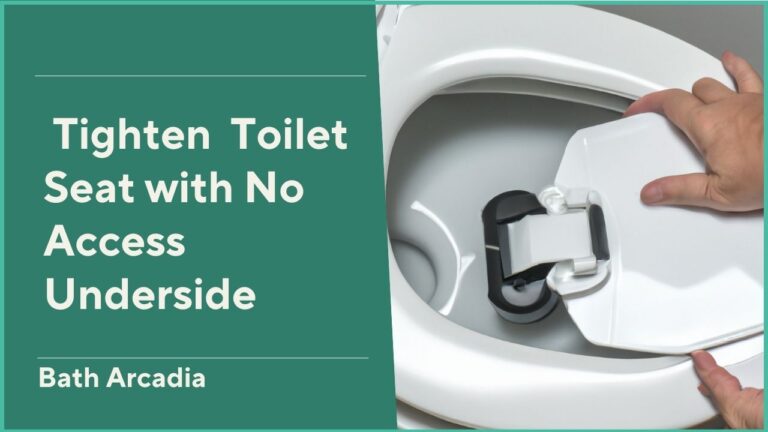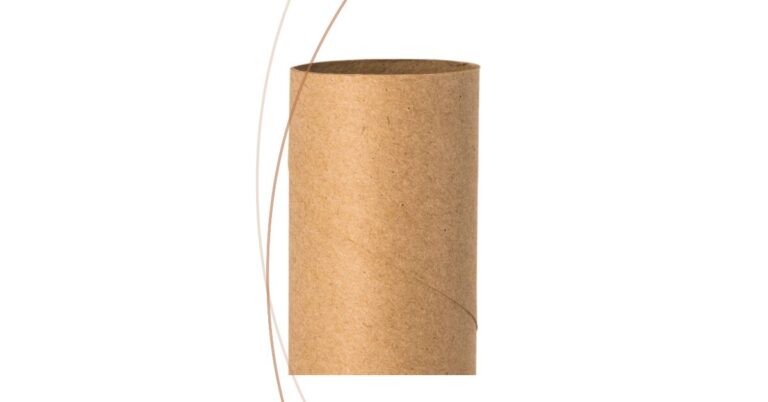Toilet seat covers have become common in many public and commercial restrooms. When using a shared facility, these thin paper barriers protect you and the toilet seat. But one question often arises – Are toilet seat covers flushable after use?
This comprehensive guide will look at the different types of toilet seat covers, their intended functions, and best practices for disposing of them properly. Key topics will include:
- The two main categories of covers – paper vs. plastic
- Factors that determine flushability, like your home’s septic system
- Proper usage and application of covers in public restrooms
- Environmental impact of flushing different cover materials
- The ongoing debate around covers’ ability to prevent the transmission of bacteria and viruses
- Troubleshooting guidance if a cover accidentally causes a toilet clog
By the end, you’ll clearly understand how to choose, use, and flush or dispose of toilet seat covers optimally for safety, sanitation, and plumbing. Let’s get started uncovering the mysteries of these ubiquitous bathroom accessories!
Main Types of Toilet Seat Covers
Regarding toilet seat covers, you’ve got two basic options – paper or plastic. It’s like choosing between bags at the grocery store, except in this case, the type you pick can greatly impact whether or not it should get the royal flush.
Paper Toilet Seat Covers
You’ll often see these single-use, tissue-thin ones in public restroom stalls. They’re made of the same lightweight paper material as the rolls beside them. The key qualities of paper covers:
- Biodegradable – They’ll break down easily in water over time without harming your plumbing or the environment.
- Flushable – Most are designed to be disposed of down the toilet after use.
- Disposable – Meant to be used once, then tossed.
- Protective – Create a barrier between you and the seat’s surface.
Paper covers come pre-folded with a handy flap in the middle so they drape right into the bowl. After you finish your business, give it an assertive flush and wave bye-bye. Take extra care flushing them if you have a septic system – more on that later.
Plastic Toilet Seat Covers
The less common plastic covers offer more heavy-duty protection. Some key qualities:
- Reusable – Made from durable plastic that allows repeated use.
- Sanitizable – Easy to disinfect between uses.
- Portable – Fold-up small for packing in a purse or bag.
- Customizable – Come in different colors and designs.
- Not flush-friendly – Avoid sending these down the toilet!
Unlike their papery pals, plastic covers are meant to be used repeatedly. Wash them or wipe them down between potty sessions. And when they’ve reached the end of their lifecycle, do not flush them – it can lead to major plumbing headaches. Instead, put them in the trash like any other plastic item.
| Cover Type | Single or Multi-Use | Made Of | Flushable? |
|---|---|---|---|
| Paper | Single-use | Thin paper | Yes |
| Plastic | Multi-use | Durable plastic | No! Dispose in trash |
Now that you know the basic categories of covers, let’s flush out the details on their flushability and proper disposal next. Hold it in!
Are Toilet Seat Covers Flushable?
Alright, this is the big question on everyone’s minds regarding toilet seat covers: should I flush it?
The answer depends on what type of cover you’re working with. Let’s break it down:
Paper Toilet Seat Covers
Good news – those flimsy paper covers in public restrooms are generally safe to flush! Here are a few tips:
- Check the packaging first – Most are designed for flushing, but look for confirmation.
- Mind your plumbing – Avoid flushing paper covers if you have an older home or septic system, where they could clog pipes.
- When in doubt, trash it – No harm in disposing of a paper cover in the waste bin.
- Troubleshoot clogs – If a cover does get stuck, try a plunger or wire snake to dislodge it.
So, paper covers get the green light for flushing in most cases. Just take care of older or rural plumbing.
Plastic Toilet Seat Covers
Do NOT flush plastic toilet seat covers! I can’t stress that enough.
Unlike paper covers, plastic covers won’t break down in water. Send them down the toilet, and you can expect:
- Clogs – Plastic covers will get stuck and block the flow.
- Backups – Serious plumbing backups may require a professional to clear.
- Damage – Potential damage to pipes, tanks, pumps, and septic systems.
- Headaches – Plumbing and sewer issues galore!
So what should you do with a plastic cover after use? Trash it! Toss it in the bin like any other plastic item when it ends.
And if you’re using a reusable plastic cover, sanitize it after each use and replace it every few months as needed.
The Golden Flushing Rule
When in doubt about flushing a toilet seat cover:
Paper = Probably OK
Plastic = NO WAY!
Say it with me now…the only things that should go down a toilet are the 3 P’s – Pee, Poop, and Paper (like toilet paper). Anything else risks a world of plumbing problems!
Now that we’ve settled the great flushing debate let’s move on to using and disposing of covers.
Proper Use and Disposal
You know which toilet seat covers can be flushed and which should get trashed. Now, let’s review some best practices for properly using and disposing of covers.
Using Paper Toilet Seat Covers
When using a paper cover in a public restroom:
- Inspect – Check for rips, holes, or liquid on the seat before placing the cover.
- Position – Place the cover on the seat with the flap hanging down into the bowl.
- Sit – Sit fully on the seat to adhere the cover across the entire seat surface.
- Sanitize – Consider wiping the seat beforehand for extra sanitation.
- Limit contact – Avoid touching the cover after use. The less handling, the better.
Flushing Paper Toilet Seat Covers
When it’s time to flush a paper cover:
- Check flow – Ensure the cover is free of toilet paper or other debris.
- Remove flap (optional) – Detach the inner flap to reduce the risk of clogging.
- Give it a flush – Flush cover and watch it swirl away.
- Double flush – Flush again if needed to ensure it’s gone.
- Clear clogs – If the cover gets stuck, use a plunger or snake to clear it.
And if flushing isn’t an option, toss used paper covers in the trash.
Using and flushing toilet seat covers properly comes down to common sense. A little caution goes a long way toward avoiding plumbing disasters!
Environmental Impact
Toilet covers might be small, but they can impact the environment depending on what they’re made of. Let’s flush out the eco-friendly facts:
- Paper = Earth-friendly
- Biodegradable paper breaks down.
- Won’t harm water, soil, or wildlife
- A better alternative to plastic covers
- Plastic = Not so planet-friendly
- Non-biodegradable plastic persists
- Can contaminate water and landfills
- Avoided if possible
So, using paper toilet seat covers is a more sustainable choice. Those flimsy paper sheets will eventually decompose without harm.
On the other hand, plastic covers linger for ages after disposal. Tossing them in landfills or the environment allows potentially harmful chemicals to leak over time. Not ideal!
While plastic covers have their purpose, going paper when possible minimizes the eco-impact of this bathroom essential. And remember – never flush plastic covers!
Now that we’ve explored the environmental pros and cons, let’s look at whether toilet seat covers work as hygienic barriers.
Do Toilet Seat Covers Provide Protection?
Now for the big question – do toilet seat covers protect against germs and grossness?
The short answer is…kind of! Here are the key points in the ongoing debate:
- Physical barrier – Covers separate your skin from the seat surface.
- Peace of mind – They can provide a psychological sense of safety and cleanliness.
- Minimal transfer – Covers limit the spread of microbes from seat to skin.
- No prevention – They don’t fully block tiny microscopic bacteria and viruses.
- Low risk – Toilet seats pose very minimal disease risk.
So, while seat covers don’t provide an impenetrable force field against all toilet plagues, they offer a reasonable hygienic buffer in public restrooms. And sometimes peace of mind is the most important benefit!
At the end of the day, taking basic precautions like washing hands, using covers, and disinfecting seats can help minimize any low risks that exist. But there’s no need to have a full-on phobia of public potty time.
Let’s tackle frequently asked questions about these suddenly fascinating bathroom accessories!
FAQ
We’ve covered a lot of ground on toilet seat covers. Let’s rapid-fire some frequently asked questions:
While they provide a barrier, microscopic germs can still get through. The risk is very low, though.
Surprisingly, yes! The smooth, non-porous material and regular cleaning make them hygienic.
Try a plunger or snake to dislodge it. Avoid flushing paper covers if you have old pipes.
They have a flap that catches the water and pulls the cover down when you flush. Pretty cool!
No! Only flush paper covers are designed for toilets.
Up to you! They can provide peace of mind but aren’t 100% necessary.
Yes, but seat covers are designed to be more effective barriers.
And there you have it – all your burning toilet seat cover questions answered! Let’s wrap this potty party up.
Conclusion
Whew, who knew toilet seat covers could be so fascinating? To recap:
- Know your cover type – paper or plastic
- Paper can be flushed, plastic trashed
- Watch out for septic systems and old plumbing
- Use paper covers fully and flush properly
- Plastic covers have an environmental impact.
- Covers offer some protection against germs
- Taking basic precautions in public restrooms is sensible
So, in essence, Be an informed consumer, follow best practices, and you can pee in peace! With your new expertise on toilet seat covers, you can use and flush them like a pro.
Now get out there and feel free to share this wealth of potty knowledge with family, friends and co-workers!


